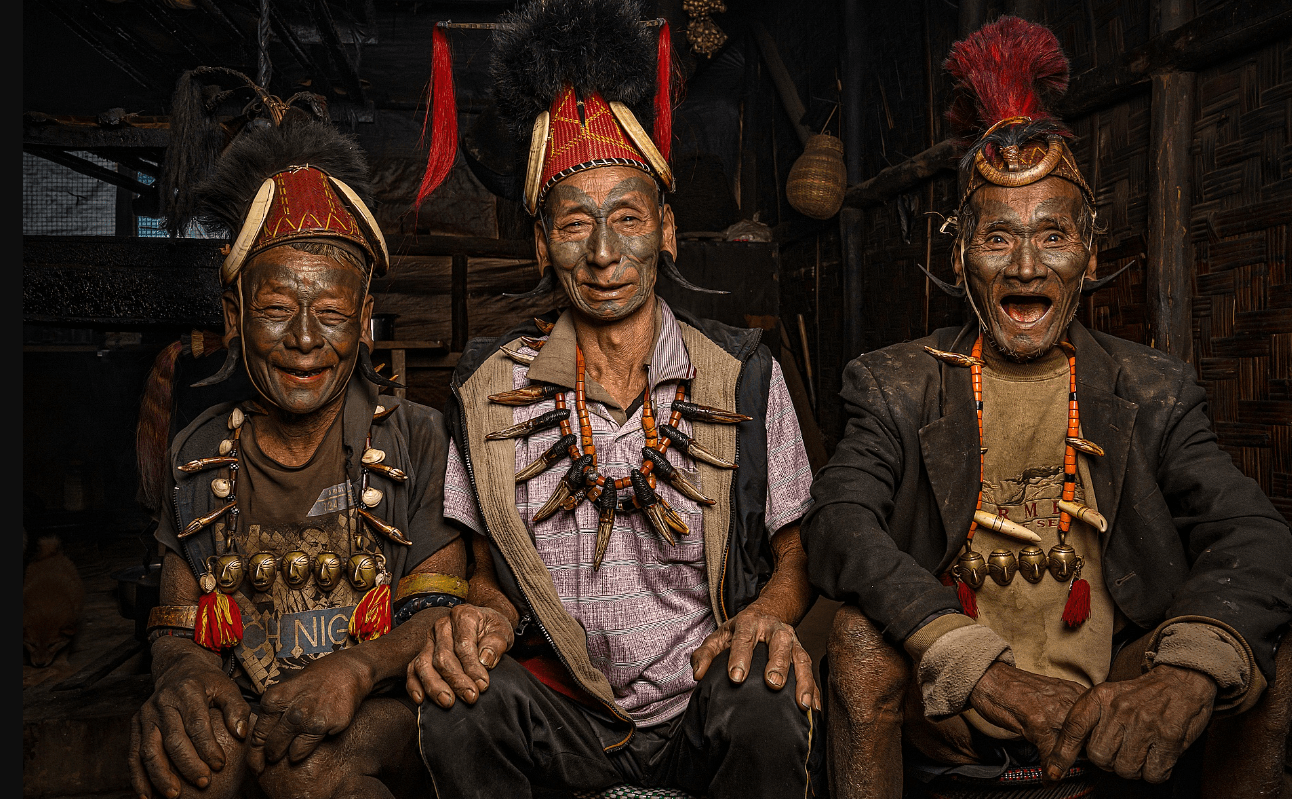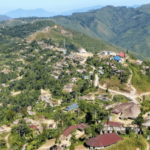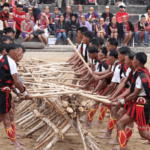This article explores the Konyak tribe of Nagaland, known for their formidable customs. Historically, this tribe was renowned for their warrior culture, which included the violent practice of severing their enemies’ heads. The following content discusses these practices and the associated violence. If you are uncomfortable with such topics, please consider not reading further.
For those willing to continue, please approach this content with an open mind. The practices described are integral to the Konyak tribe’s cultural heritage and were part of their traditional way of life. It is important to understand their customs without judgment, respecting their historical context.
The Tattooed Headhunters of Nagaland
When I first learned about the tattooed headhunters of Nagaland, I was captivated. This tribe, known for their distinct facial tattoos, belongs to a fierce warrior group historically recognized for decapitating their adversaries. The Konyak tribe, a notable ethnic group in Nagaland, is famous for their headhunting practices and intricate facial tattoos. Today, only a few of these legendary headhunters remain.
The Konyak tribe is among the 17 tribes residing in Nagaland, a state in Northeast India bordered by Myanmar and Assam. Despite its small size, Nagaland is renowned for its natural beauty and vibrant culture, particularly highlighted during the Hornbill Festival. The Konyaks inhabit the Mon district in eastern Nagaland.
If you’re interested in learning more about the Konyak tribe and their headhunting traditions, you’re in the right place. Continue reading!
A Brief History of the Konyak Tribe
The Konyak tribe of Nagaland was once a collection of distinct ethnic groups, each identified by their geographic locations, tattoo styles, and languages. The British unified these groups under the term “Konyak.”
Interestingly, the Konyak tribe did not have a written script. Their history, culture, and traditions were passed down orally through folklore, songs, and proverbs. Songs for daily tasks, such as farming and rice pounding, were integral to their culture, as were oral narratives about daily life, love, death, and headhunting.
The Konyaks belong to the Mongoloid race and are believed to have migrated from the east to Mon district after crossing the Patkai Hills.
Mon – The Land of Anghs
Mon district is known as “The Land of Anghs.” The Angh is the village head, akin to a king, with every village having one. Nine villages are considered the most powerful, led by Anghs from prestigious lineages. These villages include Chi, Mon, Longwa, Sheanghah Chingyu, Shangnyu, Longzang, Tang, Yansha, and Zangkham.
In these villages, leadership is hereditary, passed from father to son. The Angh-tak must marry an Anghya, the daughter of another Angh-tak from a different village, often forging alliances between powerful villages. Only children born of this marriage can succeed as Angh. The Angh-tak can also have additional partners, but their children do not inherit property.
In the Northern part of Mon, also known as Lower Konyak, power is hereditary. In contrast, the Southern part, or Upper Konyak, operates under an autocratic system where power is earned through status, wealth, and bravery.
The Headhunters of Nagaland
Headhunting was once central to Naga society, practiced by nearly all Nagaland tribes. The Konyak tribe is particularly noted for its headhunting traditions, largely due to being among the last to abandon the practice.
The Konyaks, fierce warriors known for their headhunting skills, used to sever the heads of enemies and display them as trophies in their homes. The warriors who brought back a head were celebrated as heroes.
For a long time, the Konyaks were isolated from outside influences due to their warlike nature. It wasn’t until the early 20th century, with British intervention, that they began to interact with the wider world.
So, What is Headhunting?
Headhunting involved taking and preserving the decapitated head of an enemy. The practice signified power and dominance over rival villages. The Konyaks believed that the skull held the soul’s power, crucial for prosperity, fertility, and well-being.
Human skulls were displayed in designated places, such as the Angh’s house or the Morungs. Morungs are communal dormitories where young Konyak males lived before marriage, learning skills and traditions, including headhunting.
Beliefs Associated with Headhunting
The Konyaks believed that possessing a victim’s head secured the victim’s service in the afterlife. Headhunting also elevated a warrior’s status and provided them with facial tattoos, marking their transition from boyhood to manhood. It was sometimes performed in response to blood feuds or to celebrate the inauguration of a Morung or a new log drum.
Konyak Tribe and Tattoos
Tattooing, more than headhunting, distinguishes the Konyak tribe. Tattoos served as markers of identity, age, and status. Konyak women also had tattoos that indicated their social status, marital status, and personal milestones.
Facial tattoos were reserved for warriors who had brought back heads, symbolizing their prowess. Tattooing was a revered ritual, performed using handcrafted combs and traditional inks.
Tattoo Artists – Who Made the Tattoos?
Tattooing was exclusively performed by women from noble families. The skill was passed from mother to daughter, and young women practiced by tattooing girls before moving on to men. Male tattoo artists specialized in rare designs, such as those of the tiger spirit, typically for the most powerful Anghs.
Technique of Tattooing
Tattoos were applied using a comb made from rattan palm spikes and a special ink. The process was painful and performed in one sitting, followed by celebrations, including feasts and traditional dishes.
Teeth Blackening of the Konyak Tribe
The blackening of teeth, a custom among the Konyaks, was seen as a sign of sexual maturity and dental health. This practice involved applying soot from a heated iron machete to the teeth daily.
Hunting and the Konyak Tribe
Hunting was crucial for Konyak men, who used various weapons like dao, bows, and guns. Animal heads were often presented to the Angh, with specific animals considered off-limits due to their spiritual significance.
End of Headhunting and Tattooing
The British banned headhunting in 1935, and the practice gradually ceased. Christian missionaries later introduced new religions and education, further ending headhunting and tattooing practices by the 1970s.
Despite embracing modern ways, the Konyaks maintain a sense of pride in their warrior heritage. Festivals like Aoling continue to celebrate their cultural traditions, even as they integrate into contemporary society.
Festivals of the Konyak Tribe of Nagaland
The Konyaks celebrate numerous festivals, with Aoling, or Aoleang Monyu, being the most significant. Held from April 1 to 6, this spring festival is a time for feasting, welcoming the new season, and honoring the deceased. It is marked by traditional attire, folk songs, dances, and competitions.
The Angh and His Penis Tattoo
An intriguing anecdote involves Angh Chakwang of Longzang village, who famously had a penis tattoo to mark his status as a great warrior. With a record of numerous headhunts, he had no space left on his body for tattoos, leading to this rare form of body art.
Headhunters Today
Although headhunting and tattooing have ceased, the Konyaks retain their historical pride. Traditional weapons and practices are preserved, especially during festivals like Aoling. The remaining headhunters, now mostly elderly, reflect on a bygone era, with their legacy being preserved in stories and photographs.
Aoling Festival, Nagaland
Our visit to the Aoling Festival in Mon district allowed us to engage with the Konyaks and their revered headhunters. The Konyaks are warm and welcoming, and while their traditional practices are fading, they continue to honor their rich cultural heritage.


